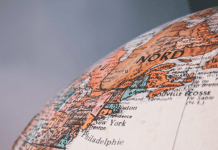
In recent years, AI face swap technology has taken the digital world by storm. From creating fun, shareable content on social media to transforming professional media production, AI-driven face swapping is redefining how we interact with images and videos. With the rise of AI video face swap platforms, users can now seamlessly replace faces in videos in real-time, achieving results that were once only possible with high-end editing software. This innovation combines advanced artificial intelligence techniques with user-friendly tools, allowing both amateurs and professionals to experiment with digital identity in creative ways.
How AI Face Swap Works
At the core of AI face swap technology are advanced machine learning algorithms, primarily Generative Adversarial Networks (GANs) and autoencoders. GANs work by pitting two neural networks against each other: one generates images, while the other evaluates how realistic they are. Over time, the system improves, producing remarkably lifelike face swaps.
Autoencoders, on the other hand, encode facial features into a digital representation and decode them onto a target face. The combination of these techniques enables AI face swap tools to preserve facial expressions, lighting, and angles, producing swaps that look natural and coherent.
The process generally involves:
- Uploading source and target images or video clips.
- Allowing the AI to detect facial landmarks and map features.
- Generating a new media file where the faces have been swapped seamlessly.
This process is now available on user-friendly platforms, making it accessible to a wide audience without requiring technical expertise.
Ethical and Legal Implications
While AI face swap technology is exciting, it also raises significant ethical and legal questions. Consent is paramount—swapping someone’s face without permission can be invasive and potentially illegal. Similarly, AI-generated content can be misused for misinformation, cyberbullying, or fraud.
Several countries have introduced or are considering regulations to govern AI-generated media. For example, the U.S. has proposed legal frameworks addressing deepfakes and digital impersonation, while European laws emphasize data privacy and digital consent.
Best practices for ethical AI face swapping include:
- Always obtaining consent from individuals whose faces are being used.
- Avoiding content that could mislead, defame, or harm.
- Clearly labeling AI-generated media to maintain transparency.
By following ethical guidelines, users can explore the creative possibilities of AI face swap responsibly.
Creative and Professional Uses
AI face swap isn’t just for fun. It has practical applications in multiple industries:
- Filmmaking: Allows directors to digitally insert actors into scenes without reshoots or to recreate younger versions of performers.
- Advertising: Brands can personalize marketing content by swapping faces into campaign visuals.
- Social Media Content: Users create viral videos, memes, or themed content quickly and efficiently.
- Virtual Try-Ons: Retailers can demonstrate products on users’ faces in real-time, enhancing e-commerce experiences.
The technology expands creative possibilities while also reducing costs and production time, especially for video and social media projects.
Risks and Challenges
Despite its benefits, AI face swap technology carries risks:
- Identity Theft: Swapped faces could be used maliciously to impersonate someone.
- Misinformation: Deepfake videos can spread false narratives if not clearly marked.
- Technical Limitations: In low-light conditions or with occluded faces, swaps may appear unnatural.
Developers are continuously improving detection algorithms to identify AI-generated media and mitigate misuse. Users should remain cautious and prioritize ethical usage.
The Future of AI Face Swap
The future of AI face swap is bright and rapidly evolving. Real-time swapping, higher resolution outputs, and integration with AR/VR environments are on the horizon. As AI models become more sophisticated, we can expect hyper-realistic swaps with minimal manual adjustments.
Moreover, as ethical standards and regulations develop, AI face swap technology will likely find balanced adoption in both professional and personal contexts. This evolution will enhance creativity while safeguarding digital integrity.
Frequently Asked Questions (FAQ)
Q1: Is AI face swap legal?
A: Legal considerations vary by country. Generally, swapping faces without consent can be illegal, while using your own image or licensed content is permitted.
Q2: Can AI face swap be detected?
A: Yes, advanced detection tools exist, including forensic AI and video analysis software, though highly realistic swaps can sometimes evade detection.
Q3: Is AI face swap safe for personal use?
A: When used ethically and with consent, AI face swap is safe. Avoid using others’ faces without permission.
Q4: Which industries benefit most from AI face swap?
A: Filmmaking, advertising, social media, and e-commerce see the most creative and commercial applications.
As AI face swap technology advances, it continues to blur the line between reality and digital creation. For those interested in experimenting or using this tool for creative projects, platforms like AI face swap provide reliable, user-friendly access to high-quality face swapping. By understanding the technology, ethical boundaries, and potential applications, users can unlock a world of digital creativity while navigating risks responsibly.










